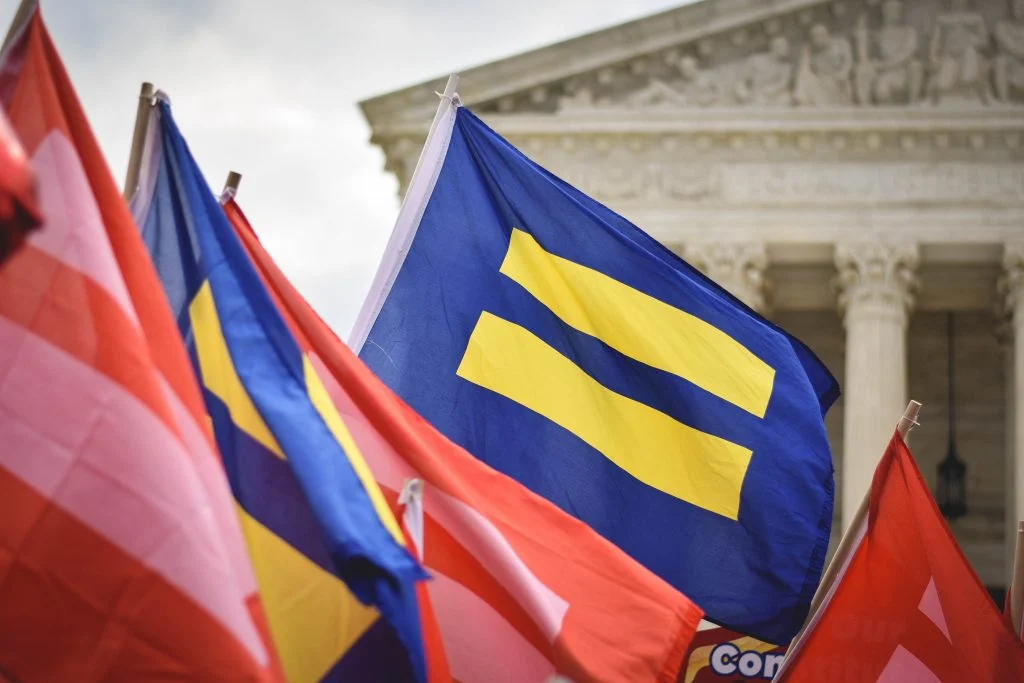Olympic Reminders for Employers about Inclusivity
The 2020 (or is it 2021?) Summer Olympics in Tokyo Japan began on July 23rd. And while there was not as much fanfare and spectacle around the opening ceremonies and the start of the Games as in the past, the timing of the Games adds an extra layer of excitement as we find ourselves in the midst of breaking out of many COVID-19 lockdowns and restrictions. We are able to include all of our friends and family at restaurants and patios, in our homes and backyards, as we gather to watch the games. These Olympic Games are, in the truest sense, really bringing us together.
The logo of the Olympics, five interlocking rings of different colours, are meant to represent the five main continents and the meeting of athletes that come together from around the world. Interestingly, however, there is more meaning in the colours of the rings themselves: blue, yellow, black green and red. These colours were chosen because every country in the world has at least one of these colours in their respective national flags. The message is one not just one of coming together, but of inclusivity.
Equal Opportunity and Inclusivity
The Olympic Charter, which governs the IOC and the action and operation of the Olympic Movement, calls for equal opportunity and bans discrimination and violence. Its Fundamental Principles of Olympism include, in part:
“Every individual must have the possibility of practicing sport, without discrimination of any kind and in the Olympic spirit, which requires mutual understanding with a spirit of friendship, solidarity and fair play…
The enjoyment of the rights and freedoms set forth in this Olympic Charter shall be secured without discrimination of any kind, such as race, colour, sex, sexual orientation, language, religion, political or other opinion, national or social origin, property, birth or other status.”
These ideals, by many reports, are seen and not just heard more at the 2020 Games than any Olympics before. As we watch and stream the events and celebrate a return to “normal”, stories about the Olympic games and the athletes continue to circulate suggesting that these Olympics, a Games like no other, are on the cusp of big changes when it comes to inclusivity and equality in sports. The world, it seems, is looking at what the athletes are wearing, with dress codes and uniforms sparking increased discussion amongst those in, and out, of the sports world. The Olympic idea of “what not to wear” offers important reminders for employers.
Dressing to Express Yourself
The Tokyo Games are the most inclusive Olympic games in the event’s 125-year history. Over 170 openly LGBTQ athletes, including the first trans Olympians, are participating in these games. This is triple the number who participated in 2016 in Rio and reported to be greater than the number of publicly-out athletes that have participated in all previous Olympic Games, summer and winter, combined. Certainly cause for celebration, particularly in a country which does not have marriage equality or any law which prohibits discrimination based on sexual orientation or gender identity.
Perhaps more importantly, the IOC has expressly allowed many athletes, including Nike Lorenz of the German women’s field hockey team and Sharni Williams, Australian women’s rugby sevens player, to wear rainbow-coloured armbands, head gear and socks during competition. Relaxing its prohibition against “demonstration of political, religious or racial propaganda” at Olympic sites and venues, the IOC’s decision means that athletes are free to express themselves at the Games.
But Pride wear isn’t the only clothing making the news in Tokyo.
Eliminating Sexualized Dress
Who knew beach handball was an Olympic sport? Chalk this up to one of those things I have learned in 2021. Beach handball has been included in the Youth Olympic Games since 2018, and the International Handball Federation (IHF) has submitted a request to the IOC to include beach handball as a new event at the 2024 Summer Olympic Games in Paris. Of course, that’s not the news making the rounds these days. The hot topic is that the Norwegian Women’s beach handball team was fined approximately $2,200.00 (150 euros per player) for being “improperly dressed” during their bronze-medal match at the European Beach Handball Championships. Their crime? Wearing spandex workout shorts rather than bikini bottoms.
The IHF’s rules and regulations call for male athletes to wear shorts that fall no longer than 10cm (4 inches) above their knees. Female athletes, on the other hand, are required to “wear bikini bottoms … with a close fit and cut on an upward angle towards the top of the leg,” and a “side width … of a maximum of 10cm”. According to the IHF, enforcement of this rule is required to promote the sport, including “the ideal presentation of the sport”, including the “outfit of the players”. For their part, the Norwegian players, who have been advocating for different uniforms for 15 years, contend the required bikini bottoms are not practical (as they are constantly required to dive into the sand), are degrading to women, and exclude players with different body types. They want, in essence, what the International Volleyball Federation offered in 2012 when it changed its uniform to allow all players uniform options, including a one-piece bathing suit or a shirt and shorts.
What is sexualized dress may not seem as obvious to some as the bikini-bottom requirement. Much like the move to unitard swimsuits in women’s swimming, women’s gymnastics is also seeing a deviation from the traditional uniform with the German team wearing full-length leotards in the qualifying event instead of the customary leotard which left the athletes’ legs bare. Again, the team members donned the new uniforms as a protest over what they deem to be the sexualization of their sport.
Dressing For the Natural You
Unfortunately, not all stories coming from the international sporting world are celebrating inclusivity. As of July 19th, the International Swimming Federation (FINA) was still reviewing its decision to ban the Soul Cap, a larger-sized swim cap designed specifically for natural black hair. Despite FINA’s commitment to “ensuring that all aquatics athletes have access to appropriate swimwear”, its decision remained in place as swimming events began at the Olympics because the cap does not follow “the natural form of the head”. The result was significant international and public backlash against FINA and the IOC for restrictions which, protestors say, stigmatize people of colour, and specifically Black women, and prohibit the full and equal participation of all athletes in the sport. FINA is now reviewing its decision to “understand the importance and inclusivity and representation”.
What Employers Need to Know
Much like the Olympic Charter sets out the fundamental principles and essential values of Olympism, the Human Rights Code has primacy. The Code is more important, and takes precedence over, other laws in the province, unless there is a specific and express exception. It prohibits discrimination on the basis of sex, sexual orientation, and, since June 2017, gender identity and gender expression.
In 2016, the OHRC issued a policy saying sex-based dress codes undermine women’s dignity and make them more vulnerable to sexual harassment from other staff, customers and management. Dress codes which reinforce stereotypical and gender or sexual notions about how men and women should look may violate the Code. Gender-specific dress codes may also create barriers for LGBTQ+ employees by preventing them from dressing in a manner that reflects their gender identity. Therefore, any gender or sex-based differences in dress codes must be reasonably linked to the employee’s job requirements.
Employers can establish a dress code, including a mandatory uniform, in the workplace within their discretion. Often, they choose to do so to communicate a corporate brand or image, to ensure their customers can easily identify their employees, or for health and safety reasons (such as in the food or manufacturing industry). Dress codes can impose restrictions on dress, attire, tattoos, piercings and grooming, but any restriction should be connected to a real business, health or safety requirement.
In Practice:
When introducing a dress code, employers must comply with the Code requirements. They should not rely on traditional ideas, stereotypes or unconscious prejudices when it comes to how someone should look. Instead, ensure that any uniform or required form of dress is appropriate for the nature of your business and the work your employees are performing, while allowing all employees to fully participate in the workplace without concerns of discrimination. This includes:
Allowing for a range of dress/uniform options and allowing employees to choose from clothing options that are comparable in terms of style, comfort, practicality and coverage regardless of sex or gender
Offering uniforms for a broad range of sizes and body types, including consideration of people with disabilities
Not requiring a specific hairstyle, grooming or appearance (makeup, piercing or body art) unless it is a legitimate requirement for the job
Not requiring employees to wear sexualized, revealing or gender-stereotypical clothing
Allowing for Code-related dress code accommodation
If you have questions about workplace discrimination, dress codes, or how to comply with human rights laws in the workplace, we’re here to help. Remember, the world is watching.






